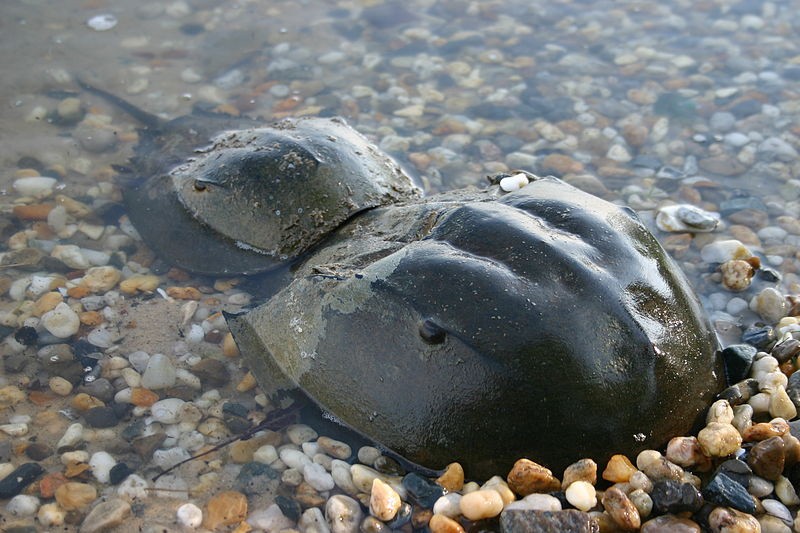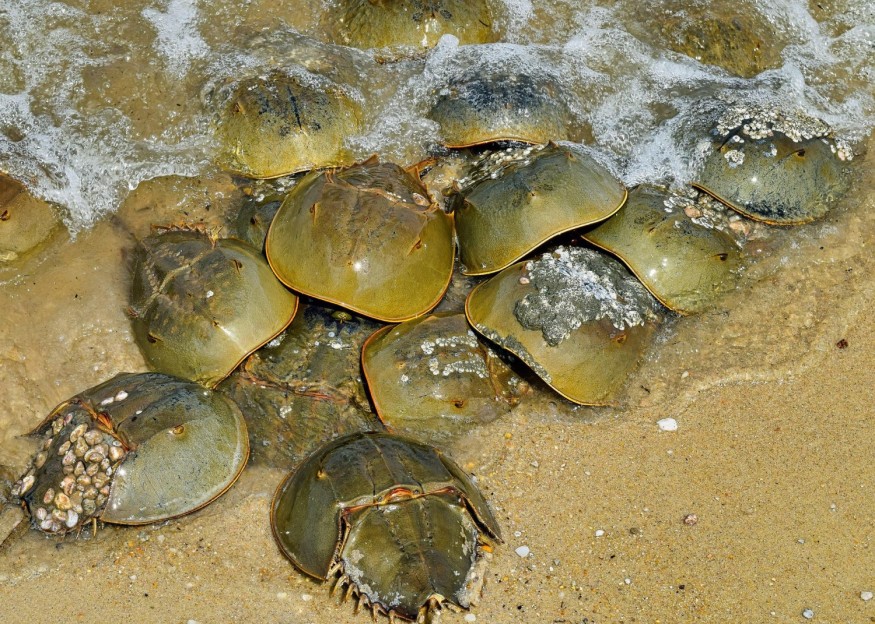One ancient species living in the seas of the Atlantic coast has played an important role in the fight against COVID-19.
Overharvesting for food, bait, and biomedical testing, as well as habitat degradation from coastal reclamation and development, threaten the world's horseshoe crab stocks.
Shoreline changes designed to preserve beaches from erosion and sea level rise caused by climate change impact their spawning habitats.

Horseshoe Crab's Importance
The horseshoe crab is vital for human vaccine safety because its blood provides cells that the biomedical industry employs to test vaccines, notably coronavirus vaccinations, to ensure they are not contaminated with germs.
They have been around for hundreds of millions of years.
Horseshoe crabs have outlived the dinosaurs, and now, confront their ultimate challenge: humans.
Horseshoe crabs are presently threatened with extinction due to habitat loss and over-farming, according to EuroNews.
"They haven't changed in 450 million years," said Laurel Sullivan, education coordinator for the Delaware Department of Natural Resources and Environmental Control's Coastal Programs.
"Nothing about them can injure us or endanger us; they simply live their lives."
However, the discovery of their life-saving powers has spawned a massive business. Every year, more than 500,000 are captured off the east coast of the United States.
Nonetheless, specialists are optimistic about the future of this life-saving living fossil.
"I believe they will survive," said Glenn Gauvry, president of the Ecological Research & Development Group.
"Other testing procedures for medication are being developed, and fishers can use other baits, putting the animals under less strain."
Pharmaceutical Uses

Hundreds of thousands of horseshoe crabs climb onto beaches across the mid-Atlantic region of the United States each spring, guided by the full moon, making it a cornucopia for hungry birds.
According to the National Geographic, horseshoe crabs are a critical resource for pharmaceutical firms to make human medications safe.
This is because the milky-blue blood of these animals is the only known natural source of limulus amebocyte lysate, a material that detects a contaminant known as endotoxin.
Endotoxin, a bacterial toxin, may be lethal if even trace quantities get into vaccinations, injectable medications, or other sterile pharmaceuticals like prosthetic knees and hips.
"All pharmaceutical businesses use these crabs throughout the world. When you think about it, your mind is boggled by our dependency on this primitive species," Barbara Brummer noted, New Jersey state director for The Nature Conservancy.
Every year, pharmaceutical corporations capture half a million Atlantic horseshoe crabs, bleed them, then release them back into the water, where many die.
This practice, along with overharvesting crabs for fishing bait, has resulted in a fall in the region's species over the last few decades.
Declining Population
The horseshoe crab is an important component of coastal biodiversity.
They produce millions of eggs on beaches to feed shorebirds, fish, and other species, which is one of their ecological duties.
Many other species, including sponges, mud crabs, mussels, and snails, use its enormous hard shell as a microhabitat.
Unfortunately, this ecological relationship might be disrupted in locations with low population density.
For more animal news, don't forget to follow Nature World News!
© 2025 NatureWorldNews.com All rights reserved. Do not reproduce without permission.





